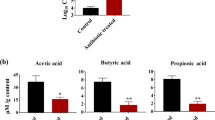Abstract
Candida albicans at times resides in the intestinal tract, where it experiences exposure to bile salts suggesting a study of the effects of crude bile salts in the form of sodium choleate (NaCho) on C. albicans growth, expression of virulent phenotypes, and adaptation to physiological challenges in vitro. Growth and phenotype alteration was examined by challenging clinical isolates of C. albicans with a wide range of NaCho concentrations by using conventional microbial physiology methods. Our results showed that (1) NaCho did not inhibit growth of yeast cells, up to 40 mg/ml; (2) NaCho powerfully stimulated the hypha formation; (3) NaCho at 2.5 and 5 mg/ml significantly induced CDR1p and biofilm formation, but these effects decreased at higher NaCho concentrations; (4) loss of cell integrity with exposure to 56°C for 15 min, was exacerbated by increasing levels of NaCho; (5) NaCho protected yeast from hydrogen peroxide damage in a dose-dependent manner; and (6) catalase activity was increased by NaCho exposure.





Similar content being viewed by others
References
Twetman S, Stecksén-Blicks C. Probiotics and oral health effects in children. Int J Paediatr Dent. 2008;18:3–10.
Fidel PL Jr. Immunity to Candida. Oral Dis. 2002;8(Suppl 2):69–75.
Donders GG, Prenen H, Verbke G, Reybrouck R. Impaired tolerance for glucose in women with recurrent vaginal candidiasis. Am J Obsetet Gynec. 2002;187:989–93.
Fidel PL, Cutright J, Steele C. Effects of reproductive hormones on experimental vaginal candidiasis. Infect Immun. 2000;68:651–7.
Rosa EA, Rached RN, Ignacio SA, Rosa RT, JoseDaSilva W, Yau JY, et al. Phenotypic evaluation of the effect of anaerobiosis on some virulence attributes of Candida albicans. J Med Micro. 2008;57:1277–81.
Ramirez-Zavala B, Reuss O, Park YN, Ohlsen K, Morschhauser J. Environmental induction of white-opaque switching in Candida albicans. PLOS Pathogens. 2008;4:e1000089.
McCool L, Mai H, Essmann M, Larsen B. Tetracycline effects on Candida albicans virulence factors. Infect Dis Obstet Gynecol. 2008;2008:493508.
Zhang XQ, Essmann M, Burt E, Larsen B. Estrogen effects on Candida albicans: A potential virulence-regulating mechanism. J Infect Dis. 2000;181:1441–6.
Gujjar P, Finucane M, Larsen B. The effect of estradiol on Candida albicans growth. Ann Clin Lab Sci. 1997;27:151–6.
Karnani N, Gaur NA, Jha S, Puri N, Krishnamurthy S, Goswami SK, et al. SRE1 and SRE2 are two specific steroid-responsive modules of Candida drug resistance gene 1 (CDR1) promoter. Yeast. 2004;21:219–39.
Bernhardt H, Knoke M. Mycological aspects of gastrointestinal microflora. Scand J Gastroenterol Suppl. 1997;222:102–6.
Zwolińska-Wcisło M, Budak A, Trojanowska D, Bogdał J, Stachura J. Fungal colonization of the stomach and its clinical relevance. Mycoses. 1998;41:327–34.
Marshall JC, Christou NV, Meakins JL. The gastrointestinal tract. The “undrained abscess” of multiple organ failure. Ann Surg. 1993;218:111–9.
Marshall SE, Marples BA, Salt WG, Stretton RJ Aspects of the effect of bile salts on Candida albicans. J Med Vet Mycol. 1987;25:307–18.
Domagk D, Bisping G, Poremba C, Fegeler W, Domschke W, Menzel J. Common bile duct obstruction due to candidiasis. Scand J Gastroenterol. 2001;6:444–6.
DeSeta F, Schmidt M, Vu B, Essmann M, Larsen B. Antifungal mechanisms supporting boric acid therapy of Candida vaginitis. J Antimicrob Chemother. 2009;63:325–36.
Larsen B, Anderson S, Brockman A, Essmann M, Schmidt M. Key physiologic differences in Candida albicans CDR1 induction by steroid hormones and antifungal drugs. Yeast. 2006;23:795–802.
Colling L, Carter RN, Essmann M, Larsen B. Evaluation of relative yeast cell surface hydrophobicity measured by flow cytometry. Infect Dis Obstet Gynecol. 2005;13:43–8.
Dowling RH. Review: pathogenesis of gallstones. Ailment Pharmacol Ther. 2000;14(Suppl 2):39–47.
Livingston SJ, Kominos SD, Yee RB. New medium for selection and presumptive identification of the Bacteroides fragilis group. Clin Microbiol. 1978;7:448–53.
Inoue S, Wirman JA, Alexander JW, Trocki O, Cardell RR. Candida albicans translocation across the gut mucosa following burn injury. J Surg Res. 1988;44:479–92.
Wu YJ, Chen DW, Liu JL, Zhang JH, Luo HS, Cui S. Estradiol promotes pituitary cell proliferations and gonadotroph differentiation at different doses and with different mechanisms in chick embryo. Steroids. 2009;74:441–8.
Author information
Authors and Affiliations
Corresponding author
Rights and permissions
About this article
Cite this article
Vu, B., Essmann, M. & Larsen, B. Sodium Choleate (NaCho) Effects on Candida albicans: Implications for Its Role as a Gastrointestinal Tract Inhabitant. Mycopathologia 169, 183–191 (2010). https://doi.org/10.1007/s11046-009-9248-y
Received:
Accepted:
Published:
Issue Date:
DOI: https://doi.org/10.1007/s11046-009-9248-y




